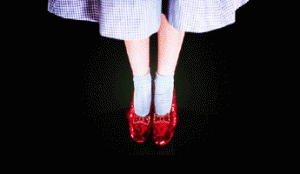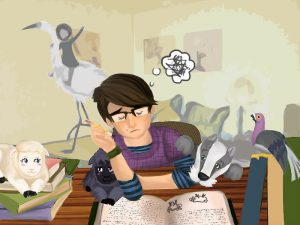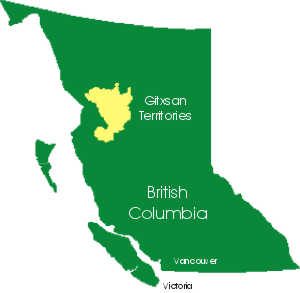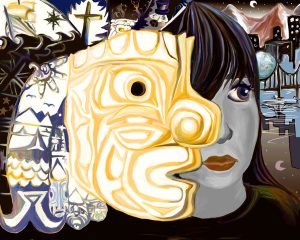In Thomas King’s “Green Grass Running Water,” a number of characters have names that are references to other things. Almost right at the beginning of the novel this occurs with characters such as Alberta Frank, Henry Dawes, John Collier, Mary Rowlandson, Hannah Duston, Elaine Goodale, Helen Mooney. All of those characters are introduced between the page 16 and 21. This blog post will examine the meanings behind the names of those characters with help from some hyperlinks, and Jane Flick’s, “Reading Notes For Green Grass Running Water.” I chose these pages because of the large amounts of references in them. Eight pages with eleven character references seems sufficient for this assignment.
Alberta Frank: According to Jane Flick’s, “Reading Notes For Green Grass Running Water,” Alberta Frank is a character who embodies the fondness that Thomas King has for the Canadian province of Alberta, since he lived there from 1980-1990. She also says that it was the disaster sight of The Frank Slide. The slide is similar to Alberta Frank’s life in that she feels like she overwhelmed and that her life could come crashing down at any moment. To tie the ideas together, the idea of “crashing down at any minute” is why Frank, Alberta never thrived as a town despite having a large hotel, sanitarium, a zoo, and originally a zinc mine.
Henry Dawes: In GGRW this character is asleep during much of Alberta Frank’s lecture about how Indigenous peoples were forced onto reserves and that seems to fit his historical character perfectly. The real Henry Dawes was completely apathetic to indigenous rights and was the man who created the Dawes Act of 1887 which put Indigenous peoples into reserves. This act was not only cruel because it took indigenous people’s land, but also because the small pieces of land that got passed down to the next generation could not be farmed because the act was made at the same time that residential schools came into place, and that generation was never taught farming. With all of this is can be said that the character Henry Dawes, and the real person Henry Dawes are ignorant of the plight that Indigenous peoples have facing in during colonization, confederation, and post confederation.
John Collier: A good listener in Alberta Frank’s class, this character is the modern student version of a real man who reversed Dawes’s assimilation policies, organized the American Indian Defense Association to fight the Bursum Bill and was responsible for Indian Reorganization Act of 1934, according to Jane Flick’s, “Reading Notes For Green Grass Running Water.” The real John Collier believed that the general allotments of Indian reservation land was a complete failure that led to the increasing loss of Indian land. That is probably why the character Collier was so focused on Alberta Frank’s lecture – one tends to focus more on topics that they believe in.
Mary Rowlandson: This character is read to be talking to Elaine Goodale during class. According to Jane Flicks, “Reading Notes For Green Grass Running Water,” Mary Rowlandson was an held captive during King Philip’s War. Eventually she authored an ‘anti-Indian narrative’, “The Sovereignty and Goodness of God Together with the Faithfulness of His Promise Displayed: Being, a Narrative of the Captivity and Restoration of Mrs. Mary Rowlandson. After reading some of this narrative, it was heavily steeped in Christian meaning. Rowlandson steadily interjects meaning into her work about “The Lord” or about “The Bible.”
Hannah Duston: Was basically in John Collier’s lap during Alberta Frank’s class. This does not actually makes sense historically as the real Hannah Duston brutally killed multiple indigenous people and her actions were less political and more brutal. She scalped people, including children in revenge for the death of her baby, according to Jane Flick’s, “Reading Notes For Green Grass Running Water.” I would have placed Henry Dawes and this women together. I wonder what Thomas Kings intentions were with this character.
Elaine Goodale: This Indigenous reformer is characterized to be in a discussion with Mary Rowlandson. This character’s biography made me rather confused of the pairings of characters in this part of the story since yet again an Indigenous reformer is paired with someone who is rather anti-indigenous. I’m wondering if there is some sort of inside joke that readers need to figure out about the placement of characters like Goodale.
Helen Mooney: This historical figure is characterized as the typical class keener, and is seemingly the only one writing down notes in class from Alberta Frank’s Lecture. The real Mooney was an Indigenous reformer and first wave feminist. Perhaps Mooney is characterized in such a way in Green Grass running water because the real Mooney was also a teacher, like Alberta Franks character and Thomas king himself. After all those who value education tend to spend more attention at it.
As you have read, the characters above are listening to Alberta Frank lecture about how some Indigenous peoples were forced onto reservations while others were imprisoned in Fort Marion. All of characters are students while the real life people that they depict were either Indigenous reformers or anti-indigenous reformers. As stated above I’m not sure what the inside joke is about putting those kinds of characters together in a class room. Classrooms are usually diverse places, but not usually so divided – at least in my experience.
Works Cited:
“Biography – MOONEY, HELEN LETITIA (McCLUNG) – Volume XVIII (1951-1960) – Dictionary of Canadian Biography.” Home – Dictionary of Canadian Biography. N.p., n.d. Web. 19 Nov. 2016.
“Dawes Act.” N.p., n.d. Web. 19 Nov. 2016.
“Elaine Goodale Eastman.” Only a Teacher: Schoolhouse Pioneers. PBS, n.d. Web. 19 Nov. 2016.
“Frank Slide – The Mountain That Walks – Mysteries of Canada.” Canada History and Mysteries. Mysteries of Canada, 2016. Web. 19 Nov. 2016.
Flick, Jane. “Reading Notes for Thomas King’s Green Grass, Running Water.” Canadian Literature 161-162 (1999): 140-172. Web. 19 Nov. 2016.
“Hannah Duston Massacre Site Statue, Penacook, New Hampshire.” RoadsideAmerica.com. N.p., n.d. Web. 19 Nov. 2016.
“John Collier (Reformer)”. Project Gutenberg. World Heritage Encyclopedia. Web. 19 Nov. 2016.
Rowlandson, Mary. “Narrative of the Captivity and Restoration of Mrs. Mary …” Project Gutenberg Canada, 2009 Nov. 3. Web. 19 Nov. 2016.

 John Lutz’s article, “First Contact As A Spiritual Performance: Encounters on the North American West Coast” is not as thought out as it could be and is full of assumptions and at least one contradiction that undermines his own argument.
John Lutz’s article, “First Contact As A Spiritual Performance: Encounters on the North American West Coast” is not as thought out as it could be and is full of assumptions and at least one contradiction that undermines his own argument.
 I wish that my story could be happier, but one of my most important values is sincerity, and to tell my story truthfully it has to begin sadly.
I wish that my story could be happier, but one of my most important values is sincerity, and to tell my story truthfully it has to begin sadly. After a few hours, the owner of the property arrived at the cabin and welcomed the travelers to his retreat. The snowbirds unpacked their bags and got cozy as night fell. Let us say that the names of the couples were Fred and Abby, Josh and Lucy, Garth and Gail, and Louis and Daphne. The owner of the property was called
After a few hours, the owner of the property arrived at the cabin and welcomed the travelers to his retreat. The snowbirds unpacked their bags and got cozy as night fell. Let us say that the names of the couples were Fred and Abby, Josh and Lucy, Garth and Gail, and Louis and Daphne. The owner of the property was called 
 I’m in my last semester of a history degree which has taken me a very long eight years to complete. In that time I’ve also completed a certification in cosmetology (hair design), and I’ve gotten various marine certifications to start a water taxi and diving business which my partner and I have run from Ruxton Island in the Gulf Islands for three summers so far. Let’s just say that I wasn’t interested in a desk job when I started my degree, and it’s only now that I’ve realized that not all arts degrees lead to desk jobs. My hobbies include graphic design, comic book illustration, creative writing, and crochet. —- Ironically those are all stationary activities that take place at desks or in chairs. (The person in the self portrait is me, by the way…. I’m not the pigeon.)
I’m in my last semester of a history degree which has taken me a very long eight years to complete. In that time I’ve also completed a certification in cosmetology (hair design), and I’ve gotten various marine certifications to start a water taxi and diving business which my partner and I have run from Ruxton Island in the Gulf Islands for three summers so far. Let’s just say that I wasn’t interested in a desk job when I started my degree, and it’s only now that I’ve realized that not all arts degrees lead to desk jobs. My hobbies include graphic design, comic book illustration, creative writing, and crochet. —- Ironically those are all stationary activities that take place at desks or in chairs. (The person in the self portrait is me, by the way…. I’m not the pigeon.)